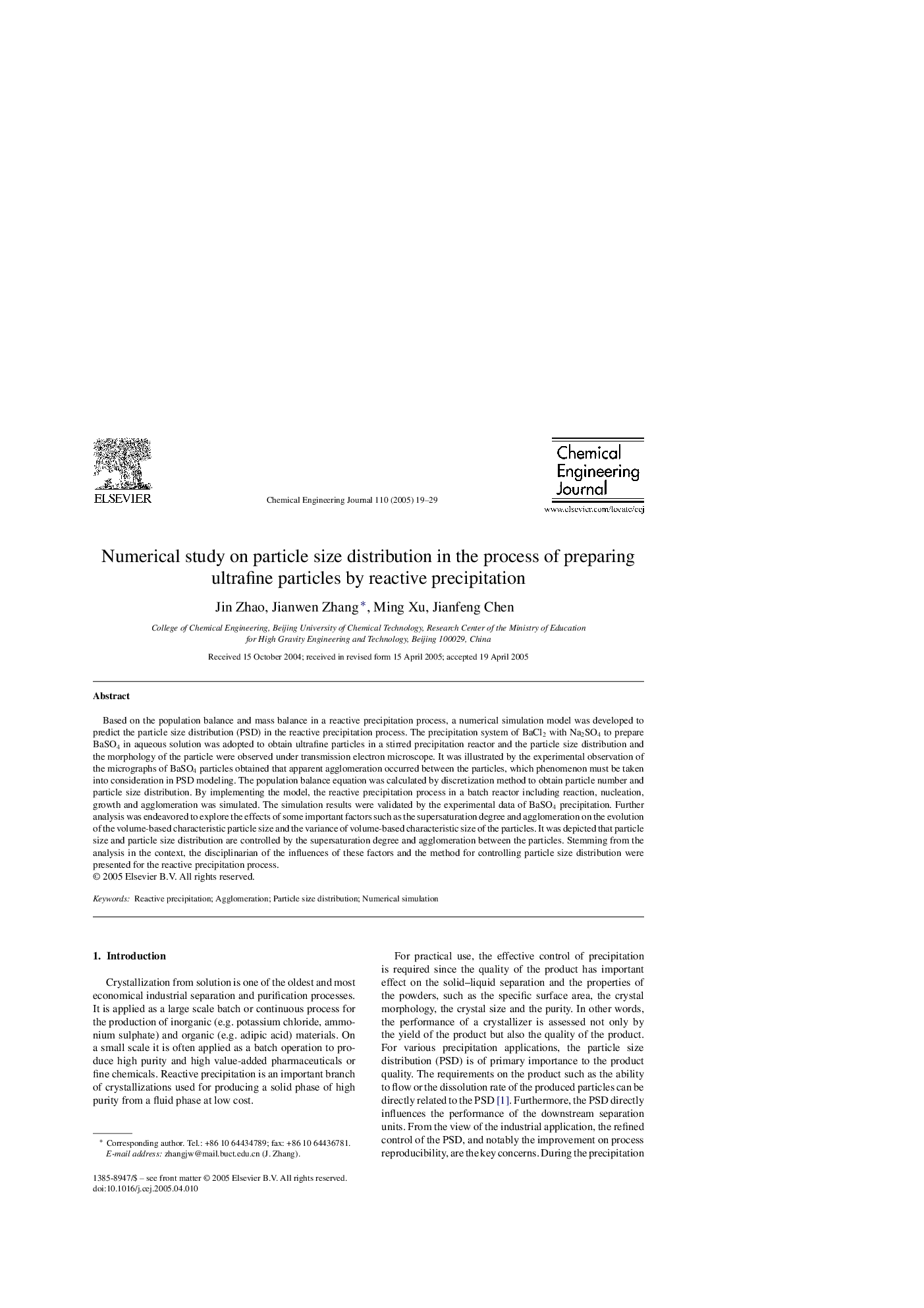| Article ID | Journal | Published Year | Pages | File Type |
|---|---|---|---|---|
| 9623795 | Chemical Engineering Journal | 2005 | 11 Pages |
Abstract
Based on the population balance and mass balance in a reactive precipitation process, a numerical simulation model was developed to predict the particle size distribution (PSD) in the reactive precipitation process. The precipitation system of BaCl2 with Na2SO4 to prepare BaSO4 in aqueous solution was adopted to obtain ultrafine particles in a stirred precipitation reactor and the particle size distribution and the morphology of the particle were observed under transmission electron microscope. It was illustrated by the experimental observation of the micrographs of BaSO4 particles obtained that apparent agglomeration occurred between the particles, which phenomenon must be taken into consideration in PSD modeling. The population balance equation was calculated by discretization method to obtain particle number and particle size distribution. By implementing the model, the reactive precipitation process in a batch reactor including reaction, nucleation, growth and agglomeration was simulated. The simulation results were validated by the experimental data of BaSO4 precipitation. Further analysis was endeavored to explore the effects of some important factors such as the supersaturation degree and agglomeration on the evolution of the volume-based characteristic particle size and the variance of volume-based characteristic size of the particles. It was depicted that particle size and particle size distribution are controlled by the supersaturation degree and agglomeration between the particles. Stemming from the analysis in the context, the disciplinarian of the influences of these factors and the method for controlling particle size distribution were presented for the reactive precipitation process.
Related Topics
Physical Sciences and Engineering
Chemical Engineering
Chemical Engineering (General)
Authors
Jin Zhao, Jianwen Zhang, Ming Xu, Jianfeng Chen,
